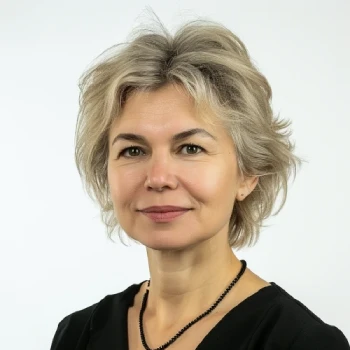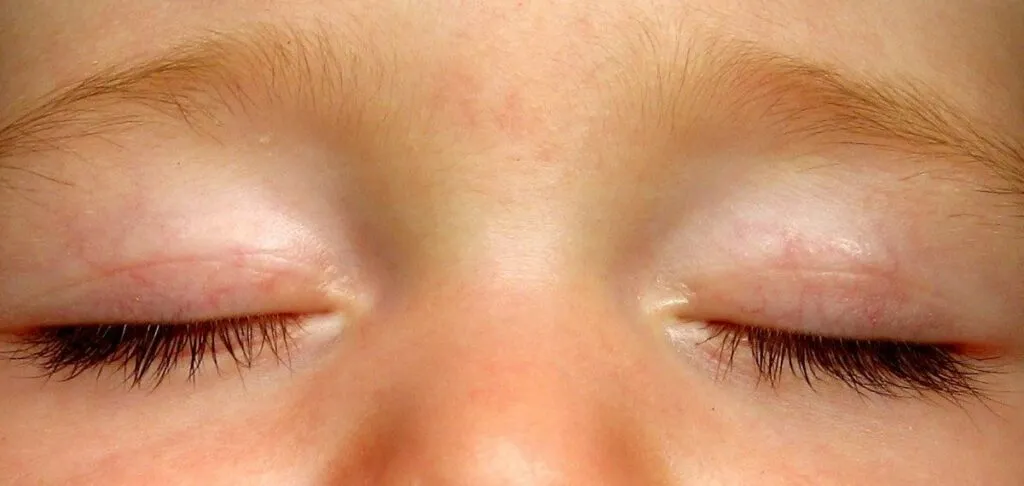
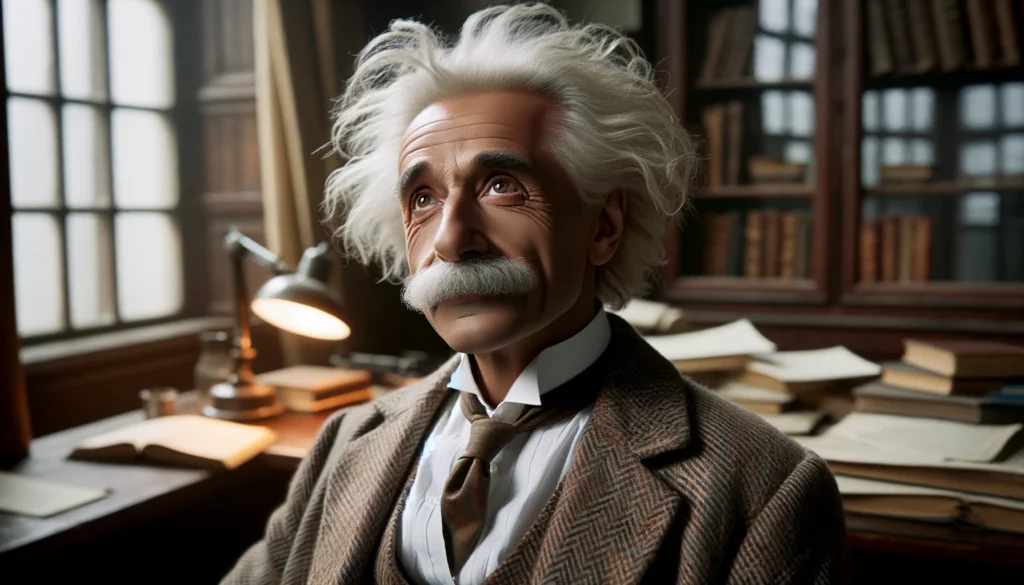
Незвичайне дитинство Альберта Ейнштейна: ознаки аутизму?
Затримки в розвитку та дивна поведінка
Якщо дитина довго не говорить, педіатри та логопеди втішають її батьків класичним прикладом: “Альберт Ейнштейн мовчав до семи років”.
Деякі джерела, щоправда, називають цифру п’ять. Але факт залишається фактом: у дитинстві майбутній лауреат Нобелівської премії явно відставав у розвитку від ровесників.
Він уперше пішов і заговорив у той час, коли його однолітки вже давно бігали і декламували вірші.
До семи років Ейнштейн міг одержимо повторювати за мовцем одне й те саме речення – ця та інші дивацтва наштовхували рідних на думку: а чи все в Альберта в порядку з головою?
Час від часу на замкнуту і відлюдькувату дитину накочували напади люті.
У такі моменти його обличчя жовтіло, кінчик носа білів і він уже погано контролював свої дії.
Одного разу в такому стані він пробив голову калаталом своїй сестрі, а іншим разом – запустив стільцем у вчительку…
Через роки, вже в нашому столітті, американські дослідники заочно поставили йому діагноз “синдром Аспергера” – це одна з форм аутизму, яку характеризують проблеми з комунікацією, крайня одержимість ідеями, труднощі під час навчання.
Згідно з іншою версією, на розвиток Альберта Ейнштейна вплинула сифілітична спадковість, її “сліди” відображаються у важких фізичних і психічних відхиленнях та ранній смертності в родині.
Батько відомого вченого Герман помер у 55 років, рідна сестра Марі була паралізована, а старший син автора теорії відносності більшу частину життя провів у психіатричній лікарні.
До речі, немовлята з величезною головою і затримкою в розвитку теж з’являються в сім’ях із сифілісом в анамнезі.
Суворий вплив матері та знайомство з наукою
Коли Альберту було шість років, його мати, владна і сувора Пауліна, визначила сина навчатися гри на скрипці.
Нудні й одноманітні уроки музики не тішили хлопчика, але мати наполягла на своєму.
У майбутньому Ейнштейн не раз відводив душу зі смичком у руці і скрипкою біля підборіддя, він навіть виступав у квінтеті музикантів-аматорів разом із математиком, поліцейським, юристом і палітурником.
Але в дитинстві навчався гри з-під палиці. Дослідники вважають, що саме мати, пригнічуючи і нав’язуючи юному Ейнштейну свою волю, посіяла в його душі насіння ворожого ставлення до всієї жіночої статі.
Боротьба і тріумфи Ейнштейна
Проблеми зі здоров’ям і труднощі на початку кар’єри
Одного разу Герман показав синові компас. Саме з цього епізоду, за спогадами самого Ейнштейна, почалося його захоплення механізмами і наукою.
Однак у гімназії юний Альберт не міг похвалитися хорошими оцінками. З математики в нього була “двійка”, і більшість учителів вважали, що нічого путнього з цього повільного тугодума не вийде.
До вищого навчального закладу, Політехнікуму в Цюріху, він вступив тільки з другої спроби.
В армію Ейнштейна не взяли через плоскостопість і варикозне розширення вен, а після закінчення вишу в нього здала печінка.
Її ослабили перенесений гепатит і напівголодне існування, яке тягнув молодий фахівець, завершивши навчання, – всі спроби влаштуватися на роботу терпіли фіаско. Траплялося, Альберт Ейнштейн не їв по кілька днів поспіль.
Після низки стресів і невдач у нього відкрилася виразка шлунка. На щастя, 1902 року йому допомогли влаштуватися у федеральне Бюро патентування винаходів у Швейцарії. А через рік, у 24, він одружився з сербкою Мілевою Марич.
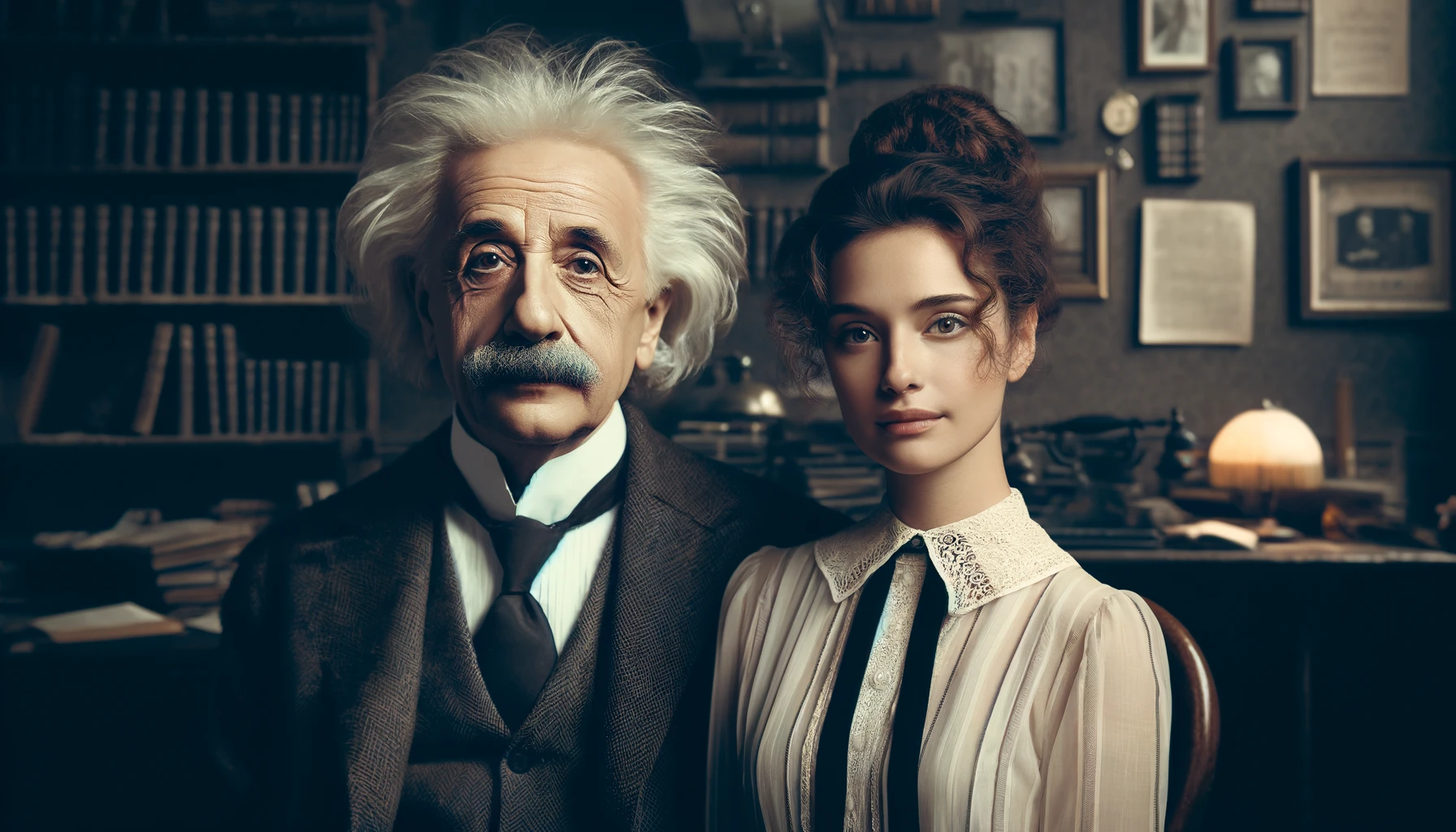
Шлюб із Мілевою Марич
Мілева була єдиною дівчиною на його курсі, вона накульгувала через перенесений в юності туберкульоз кісток і не вирізнялася красою, зате вирізнялася тонким аналітичним розумом і нестандартним мисленням.
Батьки нареченого і нареченої були проти цього шлюбу. Ейнштейну казали: “Навіщо вона тобі? Вона ж кульгава!” Але він відповідав запитанням на запитання: “А ви чули, який у неї голос?!”
Ще до весілля у них народилася донька, проте однією з умов укладення шлюбу Ейнштейн висунув відмову від дитини, і Мілева Марич віддала дівчинку чужим людям.
Взагалі, перед тим як оформити стосунки, Альберт Ейнштейн підписав зі своєю майбутньою дружиною щось схоже на пакт про незалежність, у якому вона взяла на себе зобов’язання виконувати всі хатні справи, прати й готувати для чоловіка і віддалятися, коли він забажає по-справжньому бути на самоті.
Утім, Мілева була для Ейнштейна не тільки домогосподаркою і матір’ю його двох синів. Усі перші роботи з теорії фізики йшли під двома іменами: його і дружини, але на якомусь етапі її ім’я зникало.
Полеміка навколо теорії відносності
Потенційна роль дружини Ейнштейна
Існує версія про те, що теорію відносності створила саме Мілева Марич, а чоловік привласнив собі її авторство. Про це неодноразово заявляв їхній старший син – той, який лікувався в психіатричній лікарні.
Прихильники теорії про псевдо геніальність Альберта Ейнштейна вважають, що він володів посереднім інтелектом, а ідей і новацій нахапався за роки роботи в патентному бюро. Сам Ейнштейн повторював, що єдиний талант, яким він володіє, – це допитливість.
І ще, мабуть, уміння організувати науку. Його так і називали підприємцем у науці.
Утім, навіть якщо теорія відносності належить не йому, він перший, хто узагальнив і оформив усі напрацювання, створені на цей час, і видав їх під своїм ім’ям, що, загалом-то, теж чимала праця.
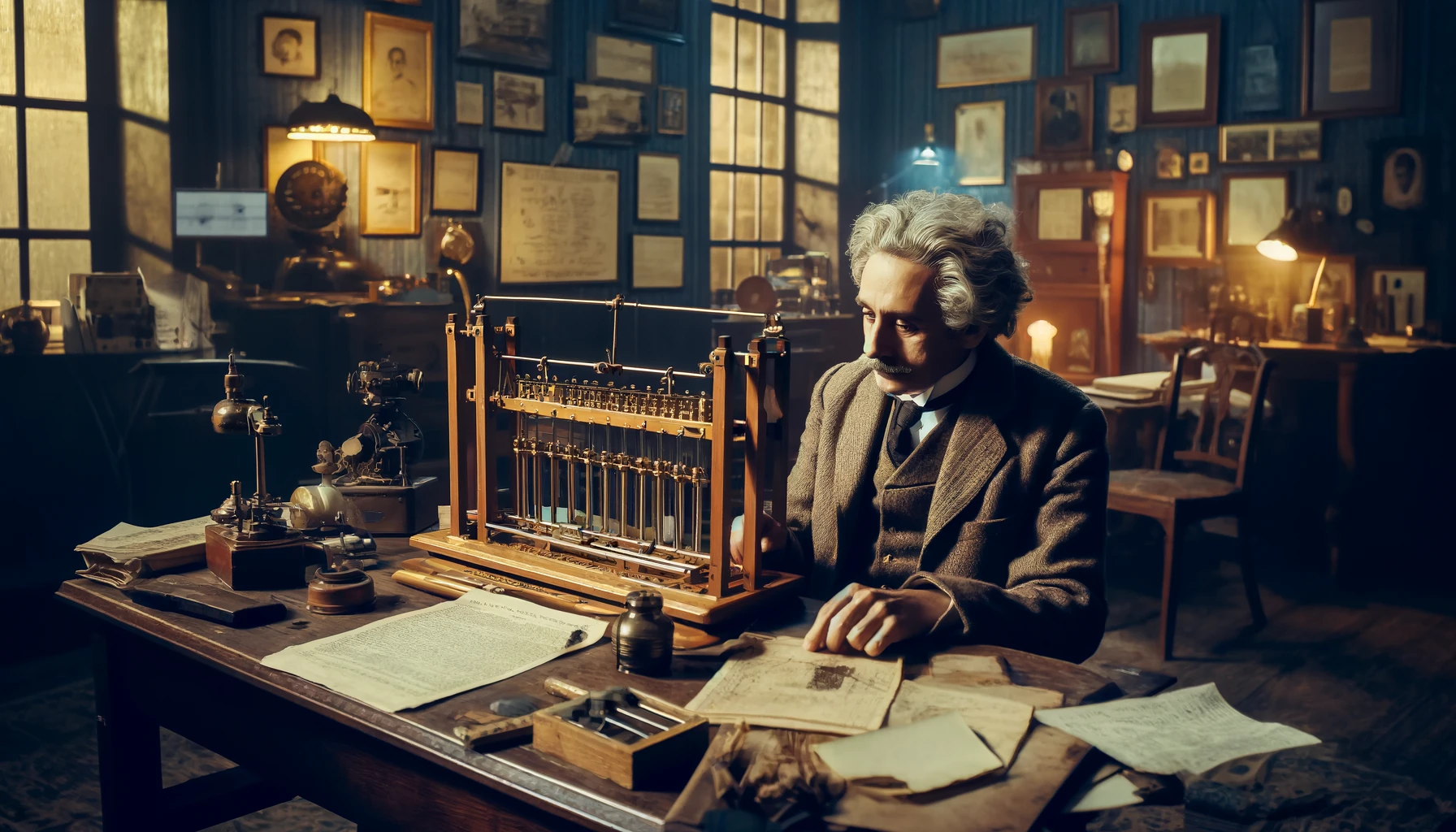
Нобелівська премія за фотоелектричний ефект, а не за теорію відносності
Показово, що Нобелівську премію 1905-го Ейнштейн отримав зовсім з іншого приводу – за теорію фотоелектричного ефекту. 32 тисячі доларів – такий на той момент був грошовий еквівалент нагороди – вчений віддав дружині як відкупні за мирне розлучення (незабаром він знову одружився зі своєю двоюрідною сестрою).
Той факт, що теорія відносності не була відзначена премією Нобеля, наштовхує на думки: або нобелівський комітет сумнівався в обґрунтованості цієї теорії, або знав, хто її справжній творець.
Особистість і образ Ейнштейна: розлад аутистичного спектра?
Стереотип “божевільного вченого”
Журнал “Таймс” назвав Ейнштейна “мрією мультиплікатора, що збулася”.
Справді, зовнішній вигляд Альберта в похилому віці, який зазвичай з’являвся в простому светрі з розпатланим волоссям, цілком відповідав образу божевільних учених і “забудькуватих професорів” у поп-культурі.
Крім того, в ній активно експлуатується мотив непрактичності великого фізика, що переноситься на збірний образ його колег.
Утім, це тільки стереотипи.
Амбітний і авторитарний характер Ейнштейна
Наталя Костинська, професорка, докторка медичних наук, лікарка-гомеопатка, відносить Ейнштейна до гомеопатичного типу аурум (усього ж їх 40).
Люди цього типу честолюбні, упевнені, діловиті, егоцентричні, вони мають яскраву харизму і легко керують оточуючими, вони авторитарні до зарозумілості та нерідко надають перевагу силовим методам розв’язання проблем (дружина Ейнштейна нерідко ходила по дому з синцями).
Аурум має інтелектуальну проникливість і душевну сліпоту. Усе, чим він займається, має світовий масштаб. Не дарма теорія Ейнштейна мала пояснити устрій Всесвіту.
Останні дні Ейнштейна
Відмова від операції з продовження життя
Після обіду 16 квітня 1955 року Ейнштейн відпочивав у своїй кімнаті, коли його секретарка почула, як він спершу поспішив до ванної, а потім звалився там на підлогу.
За кілька днів до того помічниця Ейнштейна побачила в нього на обличчі гримасу болю і запитала: “Чи все гаразд?” – “Усе – гаразд, – відповів він. – Але я – ні”.
Уже в лікарні, оцінивши ситуацію, лікарі наполегливо пропонували прооперувати вченого.
Причина смерті: розрив аневризми черевної аорти
За допомогою новітніх хірургічних методів можна було б спробувати відновити судину, що лопнула. Залишалося заручитися згодою пацієнта.
Ейнштейна мучили болі, але від операції він навідріз відмовився: “Я не вірю в штучне продовження життя”.
Наступного дня, 18 квітня, він помер.
“Причиною був розрив аневризми черевної аорти, – сказав його лікар Томас Бакі. – І Ейнштейн мав рацію: розтин показав, що хірургічне втручання не дало б результату. Місце розриву розташовувалося занадто близько до відгалужень ниркової артерії”.

